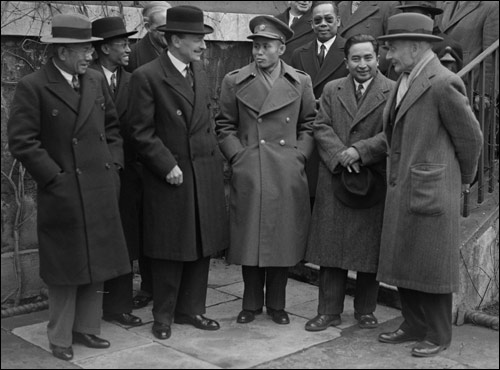What is Rohingya ?
The world's media, since 1991, had referred the word "Rohingya" as the Muslim community residing in Northern Arakan. On tracing historical origins, the word 'Rohingya' is used for the first time in 1948 as a political construct by Jamiatul-Ulama. As such, there has been no specific race or ethnic group associated with the name "Rohingya" in Burmese history.During Burma's first parliamentary period (1948-1962) under the late Premier U Nu, the word "Rohingya" was allowed to use in order to politically accommodate the representatives from Muslim community of Northern Arakan. Two well known identities, Sultan Ahmed and Abdul Gaffar, were able to represent the Muslim community of Northern Arakan during that time.
|
The Jamaitu-Ulama Statement on 1948-12-07 (PDF Downloads) |
|---|
When 1948 Burma gained her independence from Britain, there were a large numbers of Indian migrants and businesses in Burma. There was also a parliamentary system running under the British Governor-General since 1935 of which, usually consists to represents Indian migrants, few natives Burmese and the British Government.
As for Muslim community of Northern Arakan, there were about 250,000-300,000 Bengali Indians residing there and not all were migrated from Bengal Province. Majority of them born and raise in Arakan as their forefathers resettled in Arakan since 1824.
| The Aung San-Atlee Agreement 1947-Jan-27 |  |
|---|---|
When looking at the details of Aung San-Attlee agreement, Section 3 set out that an interim legislature was to be formed, after the Constituent Assembly is held. The Governor General will then select 100 of those being elected in Constituent Assembly, with a small number of persons to represent non-indigenous minorities.

The Constituent Assembly, exclusively for indigenous people of Burma, was held in April 1947, outside the framework of the Government of Burma Act 1935 [see detail: Pp 53-55, U Nu of Burma by Richard Butwell (1969)]. The two well-known identities, M.A. Gaffer and Sultan Ahmed, who were not part of the elections of the April 1947 Constituent Assembly, had been allowed to participate in Burma Parliament, representing the Muslim Community of Northern Arakan. This reflects transitional arrangement from British administration to Burman rule.
Soon after Burma gaining independence, the entire country was under rebellion and central government only had Rangoon and surrounding area only under its effective control. Aung San and all his colleagues, who had been the main drafters of Burma's independence and the members of pre-independence war time cabinet, were being assassinated in July 1947.
Nevertheless, Burma's the then political leadership led by U Nu kept pretty open minded about the alien members of parliament and the migrant community of Northern Arakan. The two MPs, Sultan Ahmed and M. A. Gaffar, were able to represent the Muslim community of Northern Arakan in new parliament.
As for the residents of Muslim community of Northern Arakan, future for their nationality status hadn't get properly considered until 1960. Within that community also, whether to remain in Arakan or go-back to Bengal India -- i.e East Pakistan -- the option was still opened.
In 1960, the regimes of U Nu-Ne Win and Gen. Ayub Khan appeared to have decided that Burma would take responsibility for remaining migrant residents of Northern Arakan.
| FAQ-01 || | >> FAQ-02 || | FAQ-03 || | FAQ-04 || | FAQ-05 || |
|---|
